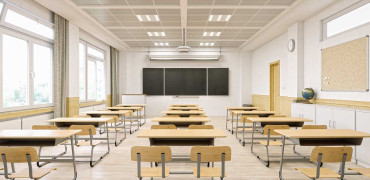Demand for good quality student accommodation is increasing, but the market is falling short. A recent report from Utopi on what students want from their accommodation, points out that there are around 758,000 student beds, but the market will need 1.96 million in 2024.
Not only is this shortfall pushing up rental costs for students, but it’s also impacting universities. Accommodation is a key decision-factor for many would-be undergraduates, so lack of student housing, or poor quality accommodation, may see students going elsewhere for their higher education.
Even though we have seen a recent boom in the new-build PBSA (purpose built student accommodation) sector, there is a surprising amount of older property in this market. Around two thirds of student accommodation was built before 2015. While nine years may not seem like a long time, in terms of building regulations and a growing focus on sustainability, there have been some significant changes.
85% of students will open a window if they’re too hot – rather than turning down the heating
Attractive, wanted and low-carbon
As a result, many universities or PBSA owners / managers are considering refurbishments.
First and foremost, will be upgrades to meet the news Building Safety Act requirements. For example, the installation of second staircases in buildings over 18 metres.
However, other important factors are in the mix. Ensuring that older student accommodations are attractive to the next generation of students is high on the agenda.
This means delivering quality spaces that are pleasant to live in and that also offer value for money.
Another aspect of building refurbishment that universities are focusing on is meeting their own carbon reduction goals, as well the wider drive to decarbonise UK heating.
Making a real impact
Although HVAC systems are hidden elements of a building, they contribute significantly to the comfort of occupants, energy efficiency and a building’s carbon footprint. It’s here that refurbishment can achieve real impact on the overall building quality. And with technology on the market today, a lot can be achieved in an HVAC retrofit.
For example, the Public Sector Decarbonisation Scheme (PSDS) is helping universities to decarbonise their estates. Many have been switching out old gas boilers for energy efficient, low-carbon heat pumps.
Today’s heat pump systems are now capable of delivering high-temperature hot water, making them ideal in high-use buildings such as student accommodation – or even gymnasiums.
Heat pumps are also an excellent heating technology for buildings which are going ‘all electric’ in their refurbishment projects. This is often the preferred choice, as it also allows for the application of on-site renewable energy generation such as photovoltaics.
Air quality and controls
Indoor air quality and cooling are also important for occupant wellbeing. The Utopi report highlighted that that 85% of students will open a window if they’re too hot – rather than turning down heating. This leads to significant energy waste.
Here, mechanical ventilation with heat recovery (MVHR) can be used to provide controlled ventilation without the discomfort of draughts or heat loss from open windows.
Filtration can be applied in MVHR systems to improve the IAQ by removing key pollutants – particularly useful for city-centre student blocks.
Student accommodation refurbishment can also provide an opportunity to improve building controls. The Utopi report pointed out that that 76% of students were ‘unaware of their room temperature” and struggled to understand how to operate their heating systems.
Modern controls can alleviate these problems, giving occupants a clear view on the temperature in their space as well as the opportunity to have control over it.
In addition, modern controls can assist the university facilities team by enabling remote monitoring of systems – allowing them to spot problems quickly and to take action.
Generating future growth
Universities may understandably regard accommodation refurbishment projects as complex and costly.
However, there are strong financial incentives for undertaking the work. Firstly, there are grants available for decarbonisation that can offset the installation of low-carbon heating (along with other carbon-reducing technologies). So now is the ideal point to consider making those changes.
Secondly is the all-important student market itself. A recent report from CBRE noted that tighter entry requirements from certain universities are encouraging students to look at their options for where to get their degrees more widely.
This means smaller universities may see demand rising in areas where new PBSA projects will be slow to appear due to planning constraints or simply lack of space. Refurbishing existing buildings to improve their offering could be a key success factor that generates future growth for these universities.
The UK’s higher education sector has seen major changes in the last few years. It’s becoming more competitive, and students are increasingly aware of their spending power.
Adapting existing accommodation to meet new standards and expectations can help to keep universities on track to a successful future, and to meeting the needs of future generations.
Mike Egan is Business Development Manager




